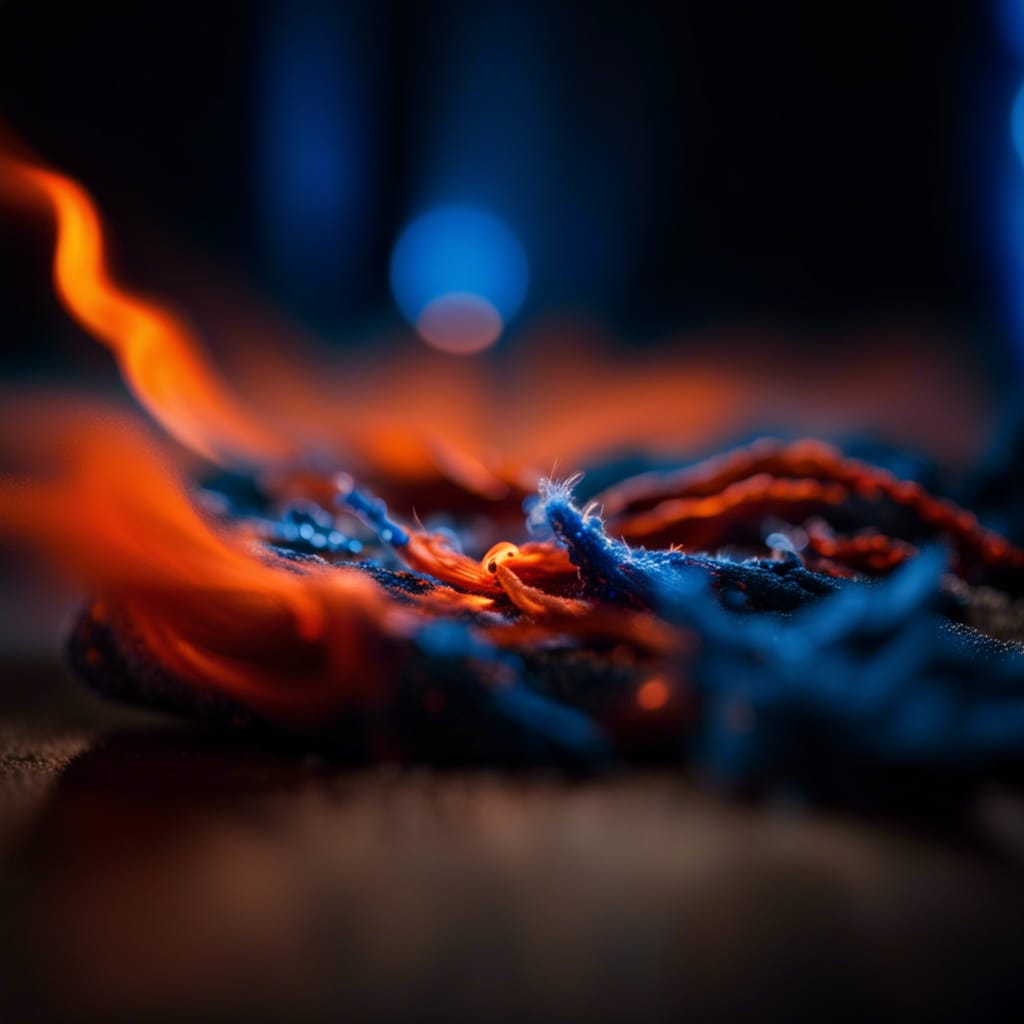Blog
When it comes to identifying the composition of carpet fibres, the burn test emerges as a remarkably informative technique. This straightforward method provides insights into the unique characteristics of different fibres based on their reactions to flame. By observing the colour of the flame, the scent produced, and the behaviour of the fibres, you can effectively distinguish between various types of carpet fibres.
1. Wool Fibres: Elegance Ignited
Colour of Flame: Wool fibres produce a sputtering flame that is orange and blue. The flame is steady, and the blue portion is more dominant.
Smell: The odour resembles burning hair, often described as a mix of burning paper and barnyard-like scent.
Behaviour: Wool fibres will continue to burn even after removing the flame, with the ash turning into a brittle, dark residue. The fibres tend to curl away from the flame and leave a black, ash-like ball at the end.
2. Nylon Fibres: The Sizzling Reaction
Colour of Flame: Nylon fibres create a bright orange flame that sizzles and crackles. The flame is steady and vibrant.
Smell: The odour is similar to celery or sweet corn, with a somewhat chemical-like note.
Behaviour: Nylon fibres melt and shrink away from the flame. When the flame is removed, the molten nylon will form a hard, bead-like residue that’s often light in colour.
3. Polyester Fibres: Quick and Pungent
Colour of Flame: Polyester fibres yield a yellow-orange flame that burns steadily.
Smell: The odour is likened to a sweet, fruity, and chemical scent, often reminiscent of burning plastic.
Behaviour: Polyester fibres melt swiftly, and the flame may produce dark, black beads that harden upon cooling. The melted polyester can adhere to the surface, similar to plastic.
4. Polypropylene (Olefin) Fibres: The Melt-and-Drip Effect
Colour of Flame: Polypropylene fibres generate a blue flame that burns steadily. The flame might have a slightly bluish-green tint.
Smell: The odour is often described as candle-like or similar to paraffin, with minimal chemical notes.
Behaviour: Polypropylene fibres melt quickly and can drip while burning, forming small, hard beads at the end. The flame may also be accompanied by a black smoke.
In Conclusion
The burn test method is a valuable tool for distinguishing between different carpet fibres by observing flame colour, scent, and fibre behaviour. By understanding the distinct reactions of wool, nylon, polyester, and polypropylene fibres to flame, you can gain insights into their composition and make more informed decisions about carpet care, maintenance, and overall preservation. Remember, while the burn test provides useful clues, it’s advisable to combine it with other testing methods for comprehensive fibre identification.


